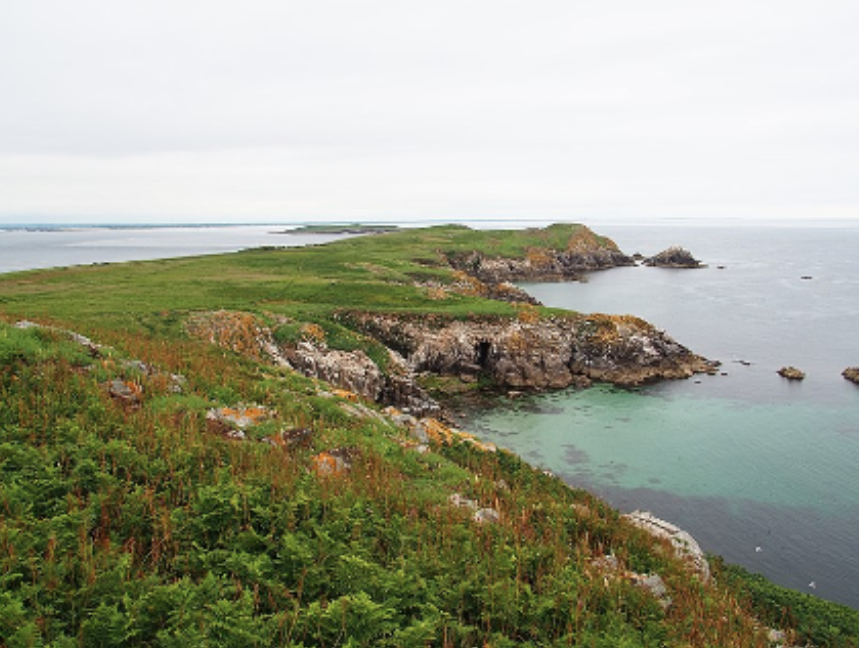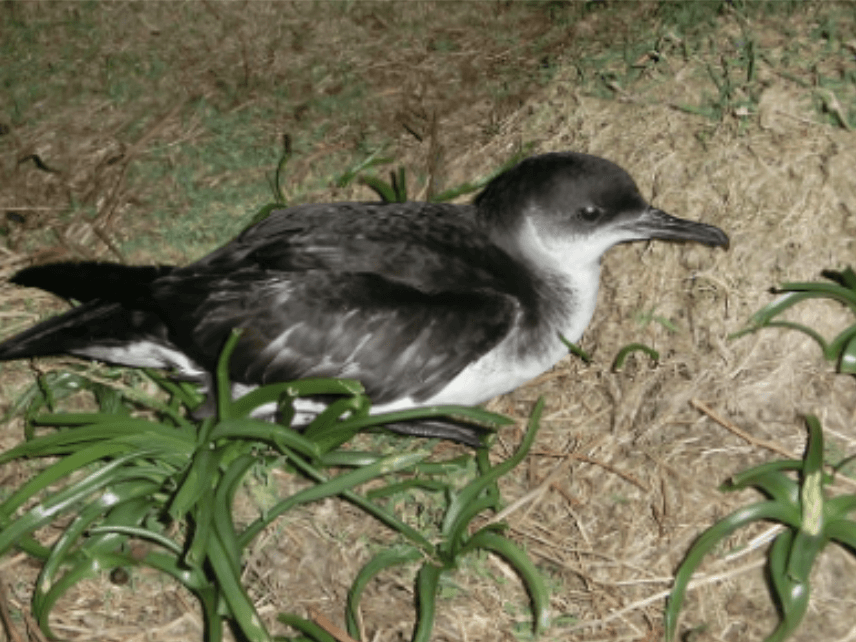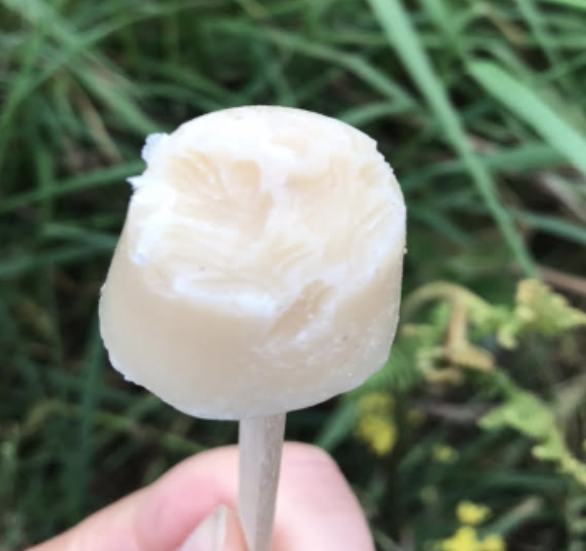Manx Shearwaters and Invasive Brown Rats on the Saltee Islands, Co. Wexford.
Great Saltee is one of two islands off the coast of Wexford which alongside Little Saltee make the Saltee islands. The Saltee islands are a marine protected area and a special area of conservation under the habitat’s directive for several unique habitats and as it is a breeding site for grey seals. The islands are also a special area of protection under the bird’s directive for species and their breeding populations including Fulmars, Gannets, Shags, Kittiwakes, Guillemots, Razorbills, and Puffins. The Saltee islands are also an incredibly important breeding colony for Manx Shearwaters.
Great Saltee Island, an Irish Seabird Colony.
Manx Shearwaters are a ground burrowing seabird which means they are difficult to census and gain a breeding population estimate due to their breeding strategies, nocturnal behaviour and preference towards island colonies. It is very important to carry out thorough, consistent monitoring and research as seabird species are globally showing trends of decline in their population numbers. Manx Shearwaters are also extremely vulnerable to predatory invasive species such as Brown rats which are currently present on Great Saltee. Brown rats pose a huge threat to seabird populations as they predate on eggs and chicks. They have no natural competition on Great Saltee and could cause the removal of entire populations.
My research thesis for the MSc in Marine Biology from University College Cork focused on seabird management on Great Saltee looking at sampling strategies for Manx Shearwaters and invasive Brown Rats. The aims of this work were to carry out a census of the Manx Shearwaters breeding population for that year while also testing several sample strategies to determine the most effective way to sample an area. Simultaneously it was an objective to determine how widely distributed Brown rats were on the island and whether there was a link between where they were present and where Manx Shearwaters were present.
Fieldwork was carried out from April to June to line up with the Manx Shearwaters breeding season. Out of these three months over two months were spent living on the island conducting fieldwork, this was possible thanks to the Neale Family owners of Great Saltee and Declan Bates who was kind enough to transport us and our supplies to and from the island on a regular basis. The methodology for estimating the breeding population of Manx Shearwaters was taken from Arneill, (2018), “Census methods for burrow nesting seabird in Ireland”. The first step involved sampling the whole island and creating a habitat map, including habitats which favoured burrowing behaviour and an atlas of the distribution of burrows. As Manx Shearwaters are ground burrowing preferring aerated sandy soil where sea campion grows and nocturnal in when they return to their burrows getting an estimate of their numbers is quite difficult. Tape playbacks were played down burrows and whether a reply was heard determined whether a breeding pair were present. It was found that out of the whole island (95 hectares), burrows with Manx Shearwaters were only present in 3 hectares, with an overall breeding population of 330.
A Manx Shearwater Burrow.
To get an idea of the distribution of the brown rat population on the island nontoxic flavoured wax bait blocks were placed across the island in different habitats and in areas where seabirds and their burrows were present. The presence and amount of teeth marks on the bait blocks showed where they were present and most active. After monitoring and changing the blocks regularly it was deduced that the brown rats are present in all areas of the island with very high activity levels. Activity levels were slightly lower in areas which contained seabirds which may have meant that Brown rats were targeting and consuming seabird species as a food source in these areas leading to a lack of interest in the bait blocks.
Brown rat teeth Marks.
Considering Great Saltee and its importance as a breeding colony for so many seabird species the small size of the breeding population of Manx Shearwaters hand in hand with the established presence of Brown rats is extremely worrying. It has been seen time and time again how the presence of rat species wipes out native breeding populations particularly island populations. As Manx shearwaters are not endemic to Great Saltee and breed in other areas there is not a risk of extinction to this species, but the reduction and removal of current populations could occur. Eradication of the brown rat population is crucial and is a feasible task to undertake which is integral to the survival of Manx Shearwaters and all other seabird species which breed on Great Saltee Island. The future of the sea bird colonies on Great Saltee are intrinsically linked with how the established invasive alien species is managed. Further population studies and close monitoring of the burrow nesting Manx Shearwater must take place alongside an eradication initiative which would ideally take place as soon as possible alongside management and restrictions which would negate the reestablishment of this invasive alien species in the future. Responsibility must be taken for the future management and monitoring of the seabirds and invasive alien species on Great Saltee.
SHARE THIS ARTICLE

















